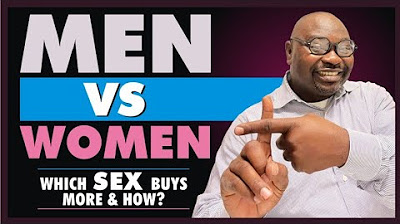AL Media Studies - Vogue Revlon Analysis 17
Summary
TLDRThis video provides a detailed analysis of a 1965 Revlon cosmetics advertisement from British Vogue, exploring the representation of women, gender performativity, and hyper-reality in marketing. The ad is examined through the lens of feminist theories, including Judith Butler's ideas on gender as performance and Baudrillard's concept of hyper-reality. The analysis critiques the objectification of women, the portrayal of beauty as an artifice, and the marketing strategies that associate femininity with consumer products. It also highlights how language and design elements in the ad create an idealized, youthful image that promotes the consumption of cosmetics to fulfill societal beauty standards.
Takeaways
- 😀 The Revlon advert from July 1965 uses a combination of drawn art and photography, reflecting the era’s limited color printing technology.
- 😀 The ad reduces women to simplistic facial features (like eyes), reinforcing the objectification of women as mere symbols of beauty.
- 😀 The concept of femininity is framed as a performative act, with makeup being portrayed as a mask or exaggeration of natural beauty, as discussed by Judith Butler.
- 😀 The use of hyperbole in the language (e.g., 'make your eyes look twice their size') emphasizes unrealistic beauty standards.
- 😀 French terms like 'a la carte' are employed to suggest sophistication, linking beauty products to high status and exclusivity.
- 😀 The advert’s copy suggests that beauty is an art form, framing makeup as an expression of artistry and craftsmanship.
- 😀 Capitalization and exclamation marks are used in the script to create a sense of urgency and excitement about the product.
- 😀 Words like 'alluring,' 'beguiling,' and 'fabulous' are used to suggest sexual appeal and attractiveness, positioning women’s value primarily in terms of their physical appearance.
- 😀 The ad promotes a notion of effortless beauty, while simultaneously suggesting that achieving such beauty requires consumer goods, highlighting the connection between appearance and consumption.
- 😀 The portrayal of large eyes as youthful and desirable ties into the broader cultural association between femininity, youth, and sexual attractiveness.
- 😀 The use of imperatives and instructional language ('dab,' 'stroke,' 'squeeze') establishes a teacher-pupil relationship, positioning the product as a tool for transformation and improvement.
Q & A
What is the main focus of the Revlon advertisement analyzed in the script?
-The main focus of the advertisement is on the objectification and representation of women through the lens of makeup, exploring how the ad constructs femininity and appeals to the consumer's desire to enhance their appearance using cosmetics.
How does the ad objectify the woman in the image?
-The ad reduces the woman to a minimalist depiction, emphasizing only her eyes, while the rest of her face is sketched in or omitted. This reduction presents her as an object of beauty rather than a complete individual.
What artistic elements are used in the advertisement to convey sophistication?
-The ad combines drawn art (resembling watercolor) and photography, with the use of French terminology and calligraphy-style fonts to convey a sense of sophistication, luxury, and elegance.
How does the advertisement use language to create allure?
-The ad employs sensual and hyperbolic language such as 'alluring,' 'dazzling,' and 'fabulous,' which heightens the appeal of the product by suggesting it can transform and enhance the consumer's beauty in an exaggerated way.
What role does the French phrase 'à la carte' play in the advertisement?
-The phrase 'à la carte' is used to evoke sophistication and exclusivity, implying that the consumer is receiving a premium product choice, even though the options are limited, much like a refined restaurant menu.
How does the advertisement frame makeup as an art form?
-The ad suggests that makeup is not just a cosmetic tool but an art form, using language that frames makeup application as a creative process that can help women 'construct' their ideal identity, aligning with the idea of femininity as a performance.
What does the ad suggest about the relationship between beauty and youth?
-The ad emphasizes that beauty is closely tied to youth, with the representation of large, youthful eyes implying that the ideal woman is young, attractive, and sexually appealing. This ties into societal norms that associate youth with femininity and beauty.
How does the ad reflect the concept of gender performativity?
-The ad reflects gender performativity by framing makeup as a tool for 'performing' femininity. It implies that applying makeup allows women to 'put on' a specific, culturally prescribed identity, much like acting or wearing a costume.
In what ways does the advertisement highlight the artificial nature of beauty?
-The ad promotes a 'natural' look that requires the use of multiple products, highlighting the artificiality of beauty. It presents the effort and products required to achieve a 'natural' appearance as a norm, underscoring the contrast between appearance and reality.
How does the advertisement use the concept of 'secrets' to engage the consumer?
-The ad creates a sense of exclusivity by referring to the product as a 'secret' that the reader is privileged to know. This adds a layer of intimacy and intrigue, making the consumer feel special for possessing knowledge that others do not.
Outlines

This section is available to paid users only. Please upgrade to access this part.
Upgrade NowMindmap

This section is available to paid users only. Please upgrade to access this part.
Upgrade NowKeywords

This section is available to paid users only. Please upgrade to access this part.
Upgrade NowHighlights

This section is available to paid users only. Please upgrade to access this part.
Upgrade NowTranscripts

This section is available to paid users only. Please upgrade to access this part.
Upgrade NowBrowse More Related Video

Postmodern Feminism : Gender and Performativity

New boss of British Vogue on ‘systemic racism’ in the fashion industry

Power and Politics in Rwanda | NowThis World

Judith Butler's Gender Trouble: A Short Introduction

Sociological Model of Consumer Behavior to Convert More Customers: Men vs Women

Strategic Management Procter and Gamble
5.0 / 5 (0 votes)